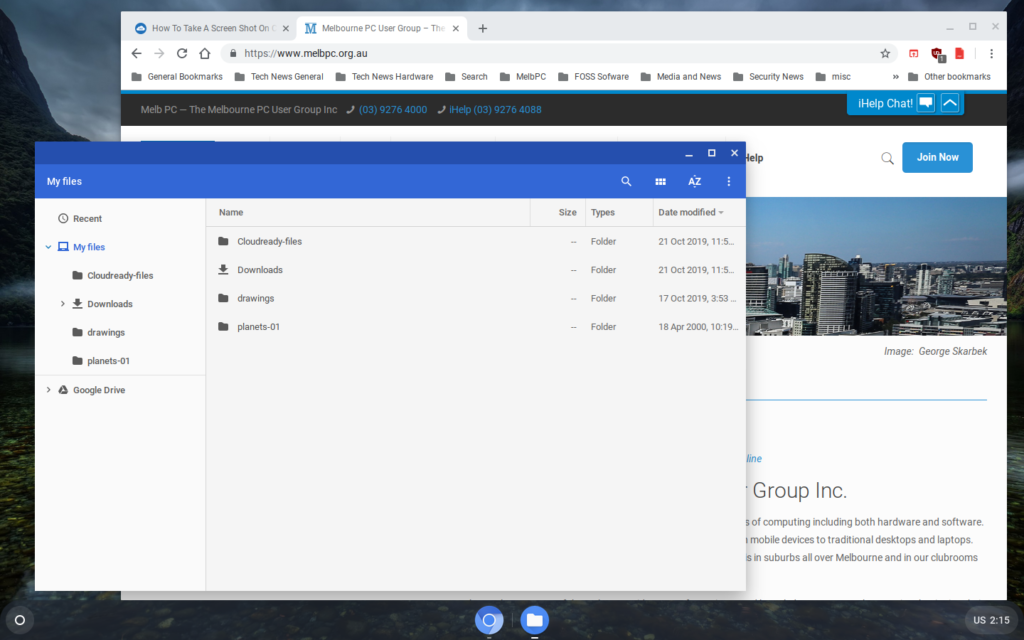Northern Suburbs Linux SIG Report October 2019
2nd November 2019
Trevor Jacobs
Unusually, we started a few minutes late, missing our customary MC. Get well soon, Paul.
Back to tradition, and we started with Nick Vespo and Linux News.
First up was the not-so-secret Android10 beta (Ed: the final public version of Android 10 has now been released). A few notable headlines …
- gesture/swipe navigation as an option, and some intelligent extras such as protection from accidental swipes
- a dark theme, good for batteries and eyes, and
- live captioning
The reviewer did hasten to add that when the beta turns into the real A10 things might look and work a bit differently, but it’s apparent there has been a lot of attention to polishing security, wifi performance, and the layout of configuration menus.
A10 will support foldable phones, with intelligent screen splits, and obviously the recently released Pixel4.
A quick mention for a US company Wing, which has beaten Amazon, Google and others with a commercial offering in drone delivery.
Finally, a demo video of the advances made in robotronics by Boston Dynamics. Quite impressive, even if, as sagely observed, there was still some remote control by humans. (Ed: If you’d like to see the video you’ll find it at https://youtu.be/y3RIHnK0_NE)
In the Open forum, a member question sparked discussion about UEFI motherboards and boot menus. Apparently UEFI mobos ain’t UEFI mobos, Sol, and some manufacturers will provide a minimal UEFI implementation while others provide useful extra utilities.
The social break was animated, with much interest in Alf Lovison’s rescue of a dead All-in-One PC, initially with new monitor driver electronics, and then a Rpi system. A good example of repair and reuse.
After the break, the main presentation of the evening came from David Hatton, this month on CloudReady (from Neverware) . In essence, this is a minimised ChromeOS and enables the user to turn an old PC or laptop into a Chromebook. While Neverware state that CloudReady will definitely work on all their certified models – some 350 in the list – many devices that are not officially certified will also run CloudReady with only minor gaps in the standard functionality. Neverware also state their end of support date for certified devices – the demonstration Dell 6410 laptop had an expiration date of August 2024.
The 2GB Ram/16GB disk/64 bit plus Google account requirements aren’t trivial, but aren’t too demanding – older devices are more likely to be omitted from the supported list by being unable to meet graphics demands than storage. There are paid for editions for enterprise and education as well as a home edition. The Home Edition is free, but there is no access to the official Support Team and Home Edition devices cannot be enrolled in the Google Admin console. The demonstration used the free Home Edition.
The first task in bringing up CloudReady is to create a bootable USB drive, and although there are other methods the easiest and most reliable method is to use the official CloudReady installer, which is a Windows utility. Comprehensive instructions are given on the website at https://www.neverware.com/freedownload
Although CloudReady will run as a live USB, the installed version is intended to be the only OS on the storage device, so the installer overwrites existing installs and doesn’t countenance dual boot. Members familiar with working with ChromeOS or Chromebooks found the feature set impressively full.

Additional apps and extensions can be installed from the Web Store and many of them have a capability to be used offline. Internet access can be via ethernet or wifi depending on the connectors on the device.


